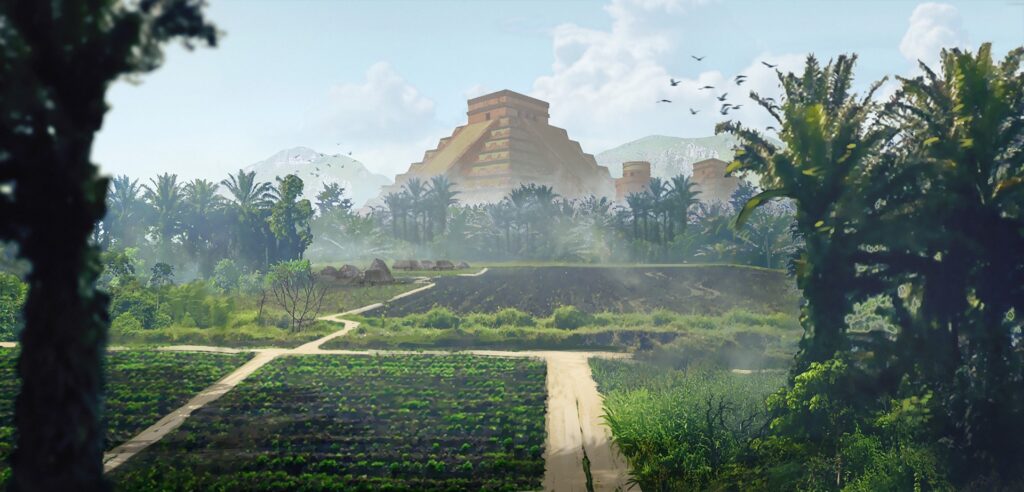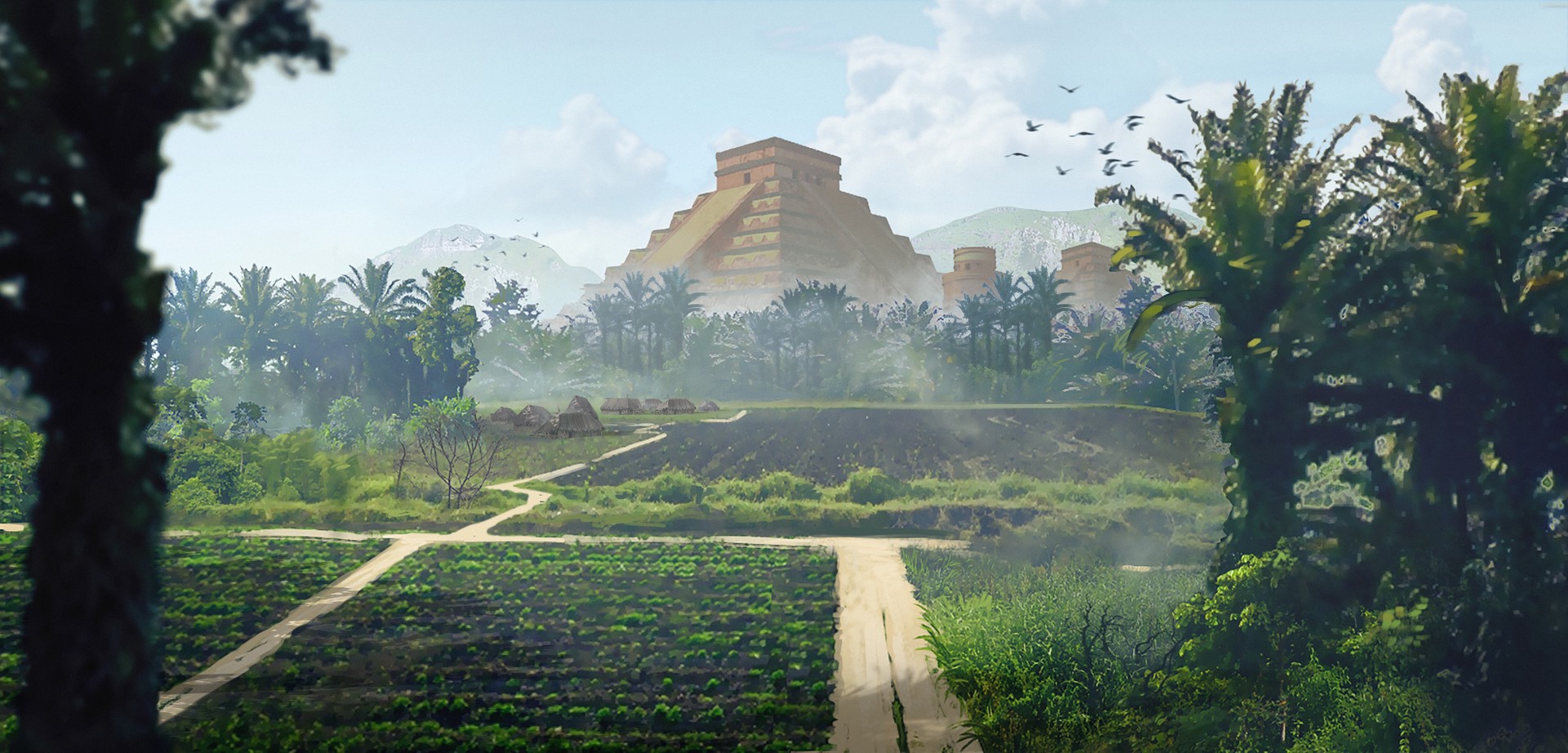
Unveiling the Mystique of the Maya Landscape: A Journey Through Time and Nature
The Maya landscape, a sprawling tapestry woven from dense jungles, towering pyramids, and ancient cities, holds a profound allure for historians, archaeologists, and nature enthusiasts alike. This region, encompassing parts of modern-day Mexico, Guatemala, Belize, Honduras, and El Salvador, was once the cradle of the Maya civilization, a society renowned for its advancements in mathematics, astronomy, and art. Understanding the Maya landscape is key to understanding the rise and fall of this fascinating culture. This article delves into the multifaceted aspects of this historical and ecological treasure, exploring its geological underpinnings, the impact of the Maya civilization, and ongoing efforts to preserve its legacy.
The Geological Foundation of the Maya World
The Maya landscape is not merely a backdrop; it is an integral part of the story. The region’s geology, characterized by limestone bedrock, karst topography, and a network of rivers and cenotes (sinkholes), played a crucial role in shaping Maya settlement patterns and agricultural practices. The porous limestone allowed for the formation of underground water systems, which the Maya ingeniously utilized for drinking water and irrigation. Cenotes, revered as sacred sites, provided access to the underworld and were central to Maya religious beliefs and rituals. The understanding of the Maya landscape starts with understanding its geological foundation. The soil composition dictated what could be grown, influencing their diet and trade routes. The availability of resources such as obsidian and jade also played a significant role in their economy and social structure.
The Maya’s Impact on the Environment
The Maya civilization, flourishing for over two millennia, left an indelible mark on the Maya landscape. While often romanticized, the relationship between the Maya and their environment was complex and sometimes detrimental. Extensive agricultural practices, including slash-and-burn agriculture, led to deforestation and soil erosion in certain areas. The construction of monumental architecture, such as pyramids and temples, required vast quantities of limestone and timber, further impacting the environment. However, the Maya also developed sophisticated water management systems, including reservoirs and canals, to mitigate the effects of drought and ensure a stable food supply. The study of the Maya landscape reveals a dynamic interplay between human activity and natural processes. Current research suggests that climate change, coupled with unsustainable agricultural practices, may have contributed to the decline of the Maya civilization in some regions. [See also: Maya Agricultural Techniques]
Deforestation and Its Consequences
One of the most significant impacts of the Maya civilization on the Maya landscape was deforestation. As the population grew, the demand for agricultural land increased, leading to the clearing of vast tracts of forest. This deforestation had several negative consequences, including soil erosion, loss of biodiversity, and changes in local climate patterns. The eroded soil also silted up rivers and lakes, affecting water quality and aquatic ecosystems. Understanding the scale and impact of deforestation is crucial for understanding the environmental challenges faced by the Maya. Furthermore, the demand for wood for construction and fuel further exacerbated the problem. The long-term consequences of deforestation are still visible in the Maya landscape today.
Sustainable Practices and Innovations
Despite the challenges, the Maya also developed sustainable agricultural practices and innovations that allowed them to thrive in the Maya landscape for centuries. Terracing, for example, helped to prevent soil erosion on sloping land. Raised fields, known as chinampas, were used to create fertile agricultural plots in wetlands. The Maya also practiced crop rotation and intercropping to maintain soil fertility and reduce the risk of pests and diseases. These sustainable practices demonstrate the Maya’s deep understanding of their environment and their ability to adapt to changing conditions. The study of these innovations provides valuable insights for modern-day sustainable agriculture. The knowledge of the Maya landscape was paramount to their survival and prosperity. [See also: Maya Water Management Systems]
Exploring Key Archaeological Sites within the Maya Landscape
The Maya landscape is dotted with numerous archaeological sites, each offering a unique glimpse into the history and culture of the Maya civilization. Tikal, located in present-day Guatemala, is one of the largest and most impressive Maya cities, boasting towering pyramids, intricate carvings, and a rich history. Palenque, nestled in the lush rainforest of Mexico, is renowned for its elegant architecture and sophisticated art. Chichen Itza, in the Yucatan Peninsula, is famous for its iconic pyramid, El Castillo, and its well-preserved ball court. These sites, and many others, provide invaluable insights into the social, political, and religious life of the Maya. Exploring the Maya landscape through these sites is a journey through time, allowing visitors to connect with the past and appreciate the ingenuity and artistry of the Maya civilization. The preservation of these sites is crucial for future generations. The Maya landscape is a living museum, offering endless opportunities for discovery and learning. [See also: The Significance of Maya Architecture]
Tikal: A Metropolis in the Jungle
Tikal, one of the largest and most important Maya cities, provides a stunning example of how the Maya integrated their urban centers into the Maya landscape. Surrounded by dense rainforest, Tikal’s towering pyramids rise above the canopy, offering breathtaking views of the surrounding area. The city’s complex network of plazas, temples, and residential areas reflects the sophisticated social and political organization of the Maya. The study of Tikal’s architecture, art, and inscriptions provides valuable insights into Maya history, religion, and cosmology. The Maya landscape shaped the city’s layout and influenced its development. The city’s reliance on rainwater harvesting and its sophisticated water management systems demonstrate the Maya’s ingenuity and adaptability. The preservation of Tikal is vital for understanding the full scope of the Maya civilization.
Palenque: An Architectural Gem
Palenque, located in the lush rainforest of Chiapas, Mexico, is renowned for its elegant architecture and sophisticated art. The city’s temples and palaces are adorned with intricate carvings and sculptures, depicting scenes from Maya mythology and history. Palenque’s most famous structure is the Temple of the Inscriptions, which houses the tomb of King Pakal, one of the most powerful rulers of the Maya civilization. The study of Palenque’s art and architecture provides valuable insights into Maya beliefs, rituals, and social hierarchy. The Maya landscape surrounding Palenque contributed to its unique character and beauty. The city’s location in the rainforest provided a natural defense against invaders and allowed for the development of a thriving agricultural economy. The preservation of Palenque is essential for understanding the artistic achievements of the Maya civilization.
Conservation Efforts and the Future of the Maya Landscape
The Maya landscape faces numerous challenges today, including deforestation, climate change, and tourism development. Conservation efforts are crucial to protect this valuable cultural and natural heritage for future generations. These efforts include protecting archaeological sites, promoting sustainable tourism, and supporting local communities in their efforts to conserve the environment. The future of the Maya landscape depends on the collaboration of governments, organizations, and individuals who are committed to its preservation. Sustainable development is key to ensuring that the Maya landscape can continue to thrive for centuries to come. The understanding of the Maya landscape is crucial for effective conservation efforts. [See also: Sustainable Tourism in the Maya Region]
The Role of Sustainable Tourism
Sustainable tourism can play a vital role in the conservation of the Maya landscape. By promoting responsible travel practices, we can minimize the negative impacts of tourism on the environment and local communities. Sustainable tourism also provides economic opportunities for local communities, incentivizing them to protect the natural and cultural resources of the region. Supporting locally owned businesses, respecting local customs, and minimizing our environmental footprint are all important aspects of sustainable tourism. The Maya landscape benefits from tourism that is both respectful and economically beneficial to the local population. Education and awareness are key components of sustainable tourism. Tourists need to be informed about the importance of conservation and the ways in which they can contribute to it. The long-term health of the Maya landscape depends on responsible tourism practices.
Community Involvement in Conservation
The involvement of local communities is essential for the success of conservation efforts in the Maya landscape. Local communities have a deep understanding of the environment and a vested interest in its preservation. By empowering local communities to manage their natural resources and participate in conservation initiatives, we can ensure that these efforts are sustainable and effective. Community-based conservation programs can provide economic benefits for local communities, such as ecotourism opportunities and sustainable agriculture initiatives. The Maya landscape is best protected when local communities are active participants in its conservation. Education, training, and access to resources are key to empowering local communities to become stewards of their environment. The long-term sustainability of the Maya landscape depends on the active involvement of local communities.
Conclusion: A Legacy to Preserve
The Maya landscape is a testament to the ingenuity, resilience, and cultural richness of the Maya civilization. From its geological foundations to its archaeological treasures, this region offers a profound glimpse into the past and a valuable lesson for the future. By understanding the complex relationship between the Maya and their environment, we can learn valuable lessons about sustainability and the importance of preserving our cultural and natural heritage. The future of the Maya landscape depends on our collective efforts to protect it from the threats of deforestation, climate change, and unsustainable development. Let us work together to ensure that this remarkable legacy endures for generations to come. The Maya landscape is more than just a place; it is a story, a history, and a reminder of the interconnectedness of humanity and nature. The continued study of the Maya landscape will undoubtedly reveal more secrets and insights into this fascinating civilization. The preservation of the Maya landscape is a moral imperative.

